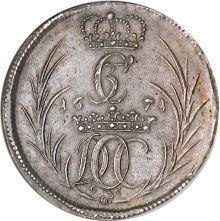Founded 1616 | Headquarters Tharangambadi | |
 | ||
The Danish East India Company (Danish: Ostindisk Kompagni) refers to two separate Danish chartered companies. The first company operated between 1616 and 1650. The second company existed between 1670 and 1729, however, in 1730 it was re-founded as the Asiatic Company (Danish: Asiatisk Kompagni).
Contents
First company
The first Danish East India Company was chartered in 1616 under King Christian IV and focused on trade with India. The first expedition, under Admiral Gjedde, took two years to reach Ceylon, losing more than half their crew. The island had been claimed by Portugal by the time they arrived but on 10 May 1620, a treaty was concluded with the Kingdom of Kandy and the foundation laid of a settlement at Trincomalee on the island's east coast. They occupied the colossal Koneswaram temple in May 1620 to begin fortification of the peninsula before being expelled by the Portuguese. After landing on the Indian mainland, a treaty was concluded with the ruler of the Tanjore Kingdom, Raghunatha Nayak, who gave the Danes possession of the town of Tranquebar, and permission to trade in the kingdom by treaty of 19 November 1620. In Tranquebar they established Dansborg and installed Captain Crappe as the first governor (opperhoved) of Danish India. The treaty was renewed on 30 July 1621, and afterwards renewed and confirmed on the 10 May 1676, by Shivaji the founder of the Maratha Empire.
During their heyday, the Danish East India Company and Swedish East India Company imported more tea than the British East India Company, smuggling 90% of it into England, where it could be sold at a huge profit. Between 1624-36, Danish trade extended to Surat, Bengal, Java, and Borneo, with factories in Masulipatam, Surat, Balasore and at Java, but subsequent European wars in which Denmark participated ruined the Company, and trade in India ceased entirely between 1643–69, during which time all previous acquisitions were lost except Tranquebar, which held out until aid from Denmark arrived in 1669.
Second company, and the Asiatic Company
In 1670, a second Danish East India Company was established, before it too was dissolved in 1729. In 1730, it was refounded as the Asiatic Company and opened trade with Qing China at Canton. The first expedition went badly, with Den gyldne Løve lost with its cargo of silver off Ballyheigue, Ireland, on the outbound journey. The local landowners held the silver at their estate and pursued a salvage claim, but a gang of locals overpowered the Danish guard and made off with the hoard, causing a diplomatic row between Denmark-Norway and Britain. With the royal licence conferred in 1732, the new company was granted a 40-year monopoly on all Danish trade east of the Cape of Good Hope. Up to 1750, 27 ships were sent, with 22 surviving the journey to return to Copenhagen. In 1772, the company lost its monopoly and, in 1779, Danish India became a crown colony.
During the Napoleonic Wars, in 1801 and again in 1807, the British Navy attacked Copenhagen. As a consequence of the last attack, Denmark (one of few West European countries not occupied by Bonaparte) lost its entire fleet and the island of Helgoland (part of the duchy of Holstein-Gottorp) to Britain. Denmark finally sold its remaining settlements in mainland India in 1845 and the Danish Gold Coast in 1850, both to the British.
